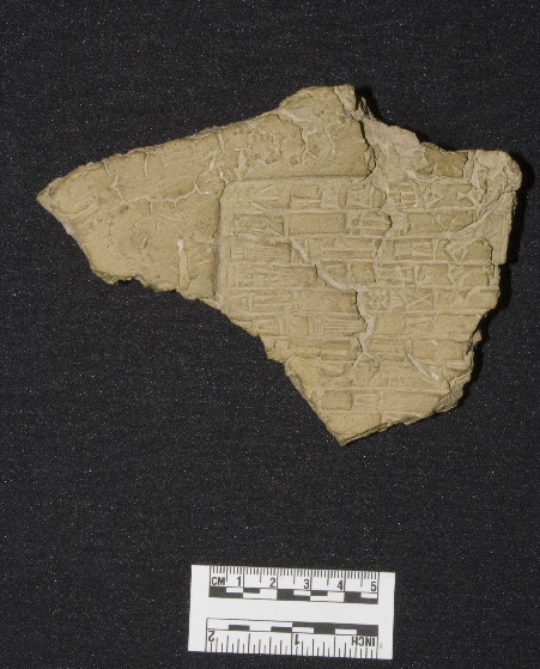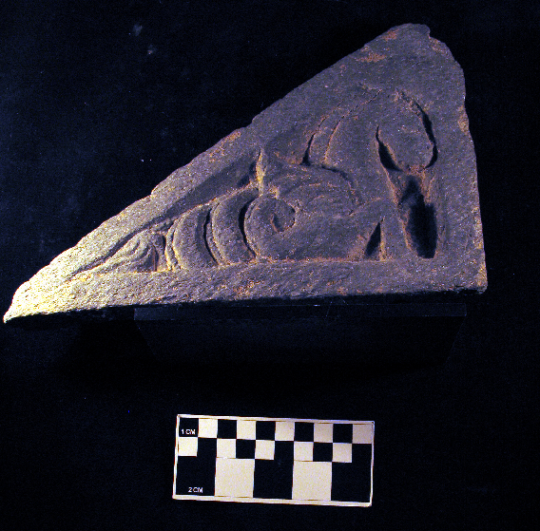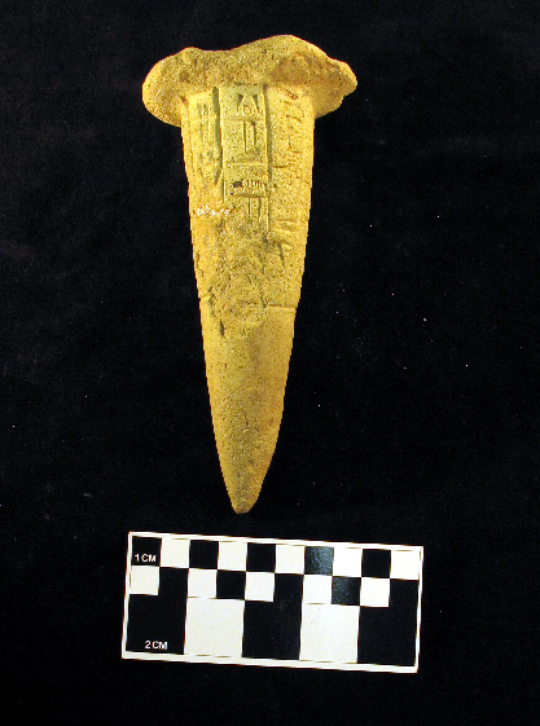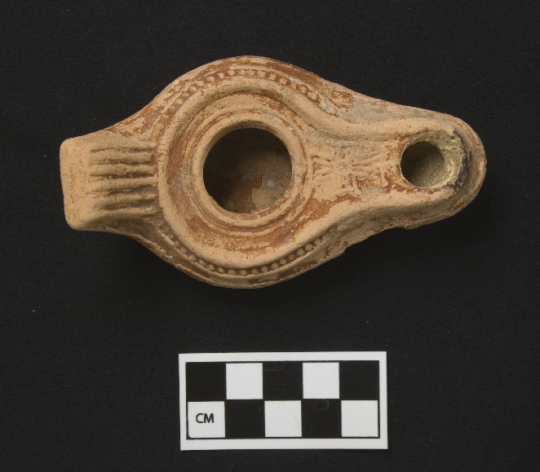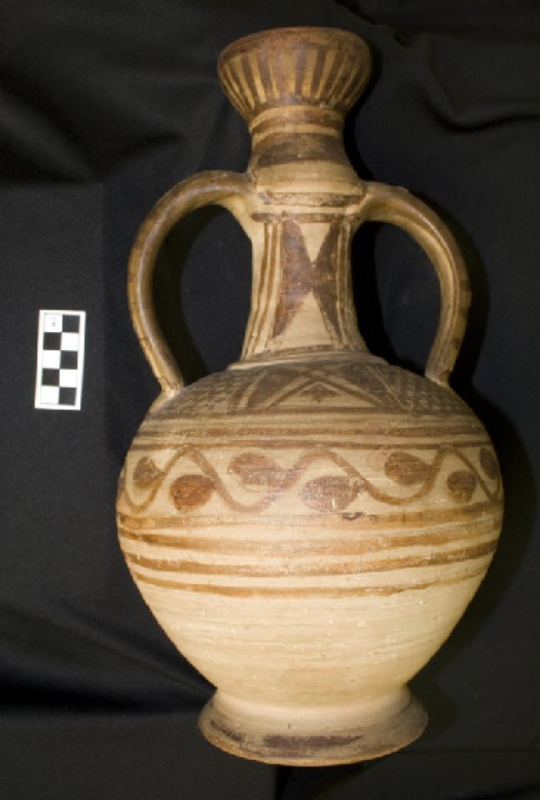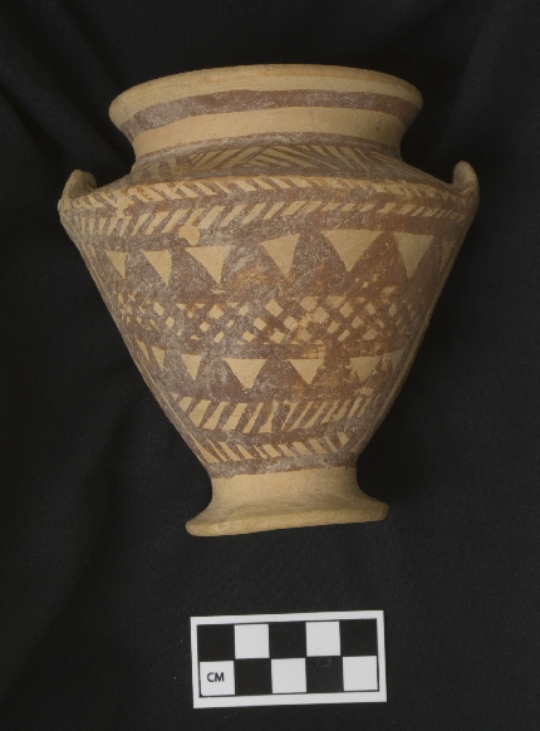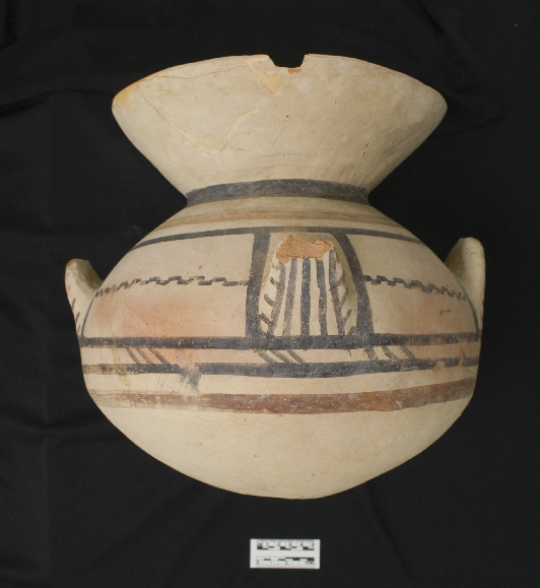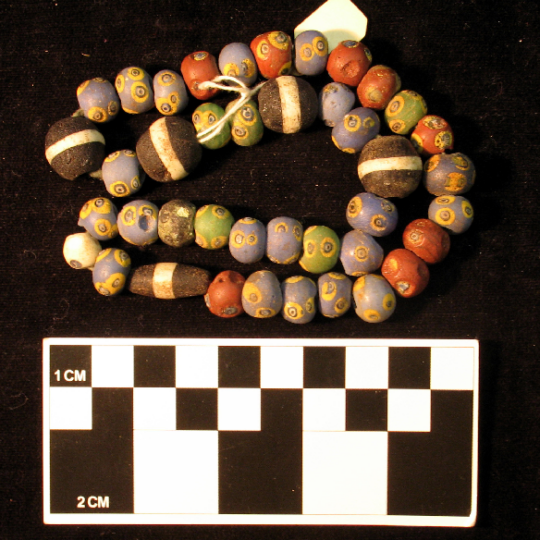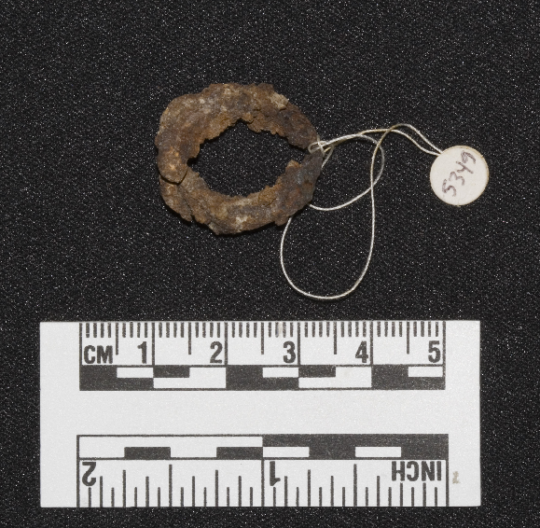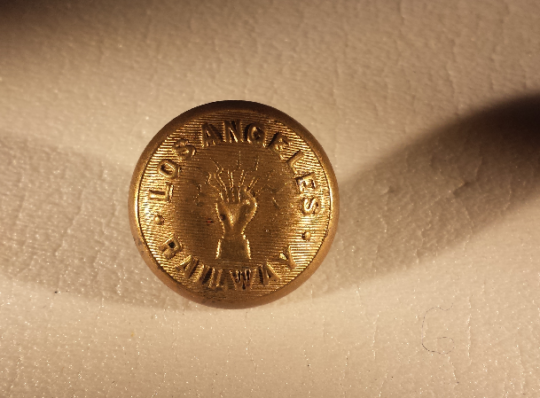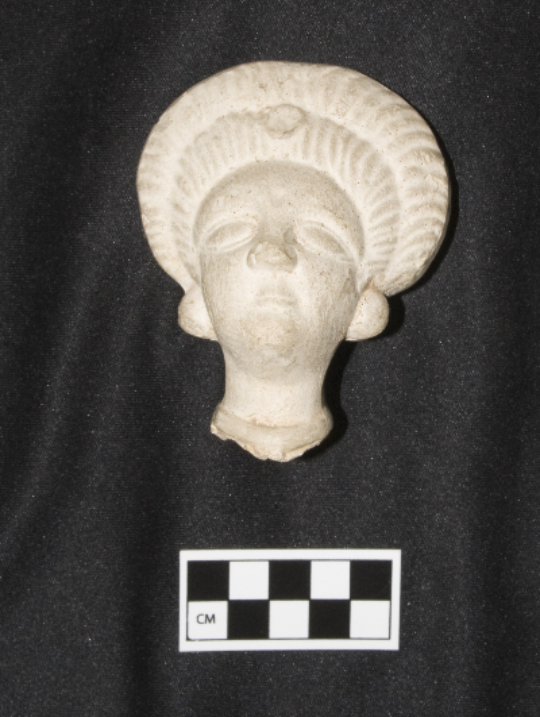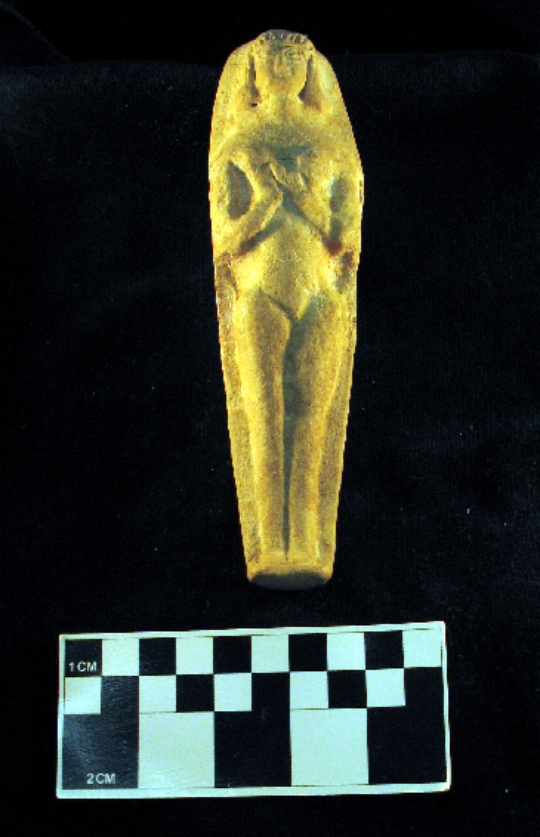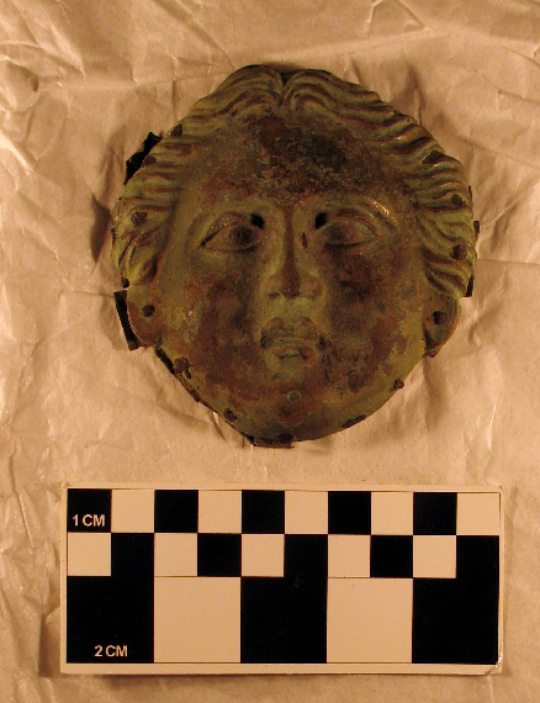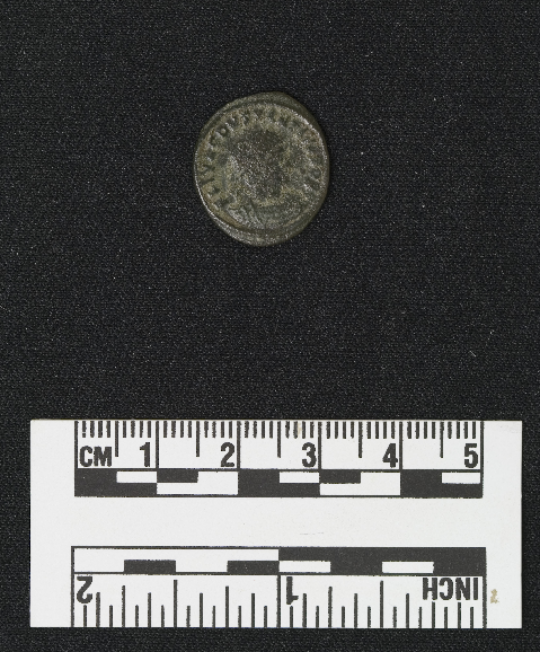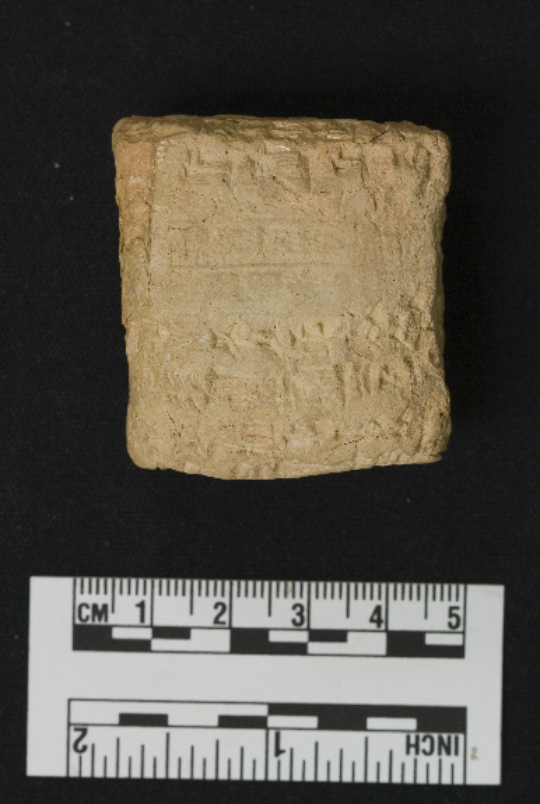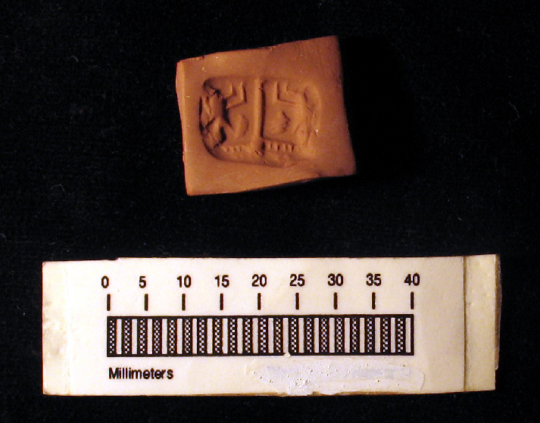Get your hands on the past! The ARC Lab has real artifacts from various excavations. Our archaeology collection offers a mesmerizing glimpse into the diverse cultures and civilizations that have shaped our world. From jewelry and sculptures to everyday tools, every piece in our archaeology collection has a story. Come find out what they are!
Architecture
Foundation Bricks, Cones, Decorative Reliefs
Correspondence
Old Babylonian, Larsa, c. 19-16 BC
Foundation Brick; Cuneiform Tablet
Clay
ID 6832
Donated by Richard Ainley in 1986.
Inscription:
Sin-iddinam, warrior, the provider of Ur, King of Larsa, the counselor of the shrine E-Babbar, the one who makes fast the foundations of the land of Utu.
This inscription was written in Akkadian, an extinct East Semitic language from ancient Mesopotamia. Would you be interested in learning an extinct classic language?
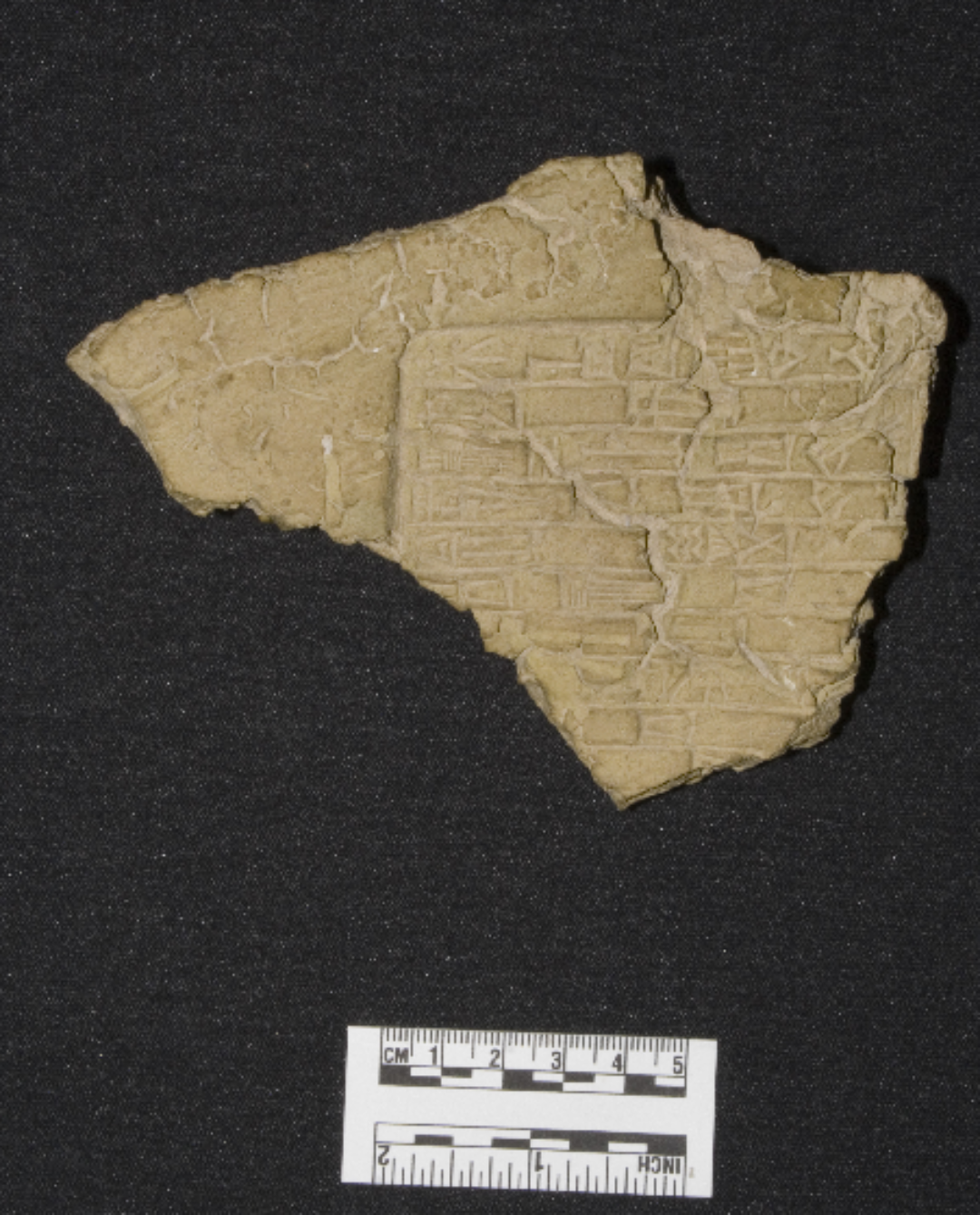
Engraving
Pakistan, Gandhara, 3 AD
Relief Gable of a Hippocampus
Schist
ID 9607
Donated from the collection of Jeanne and Lloyd Raport in 1984.
Winged hippocampus are an extremely rare subject for Gandraran reliefs. Most of the archaeology in this city is directed to the origins and the spread of Buddhism.
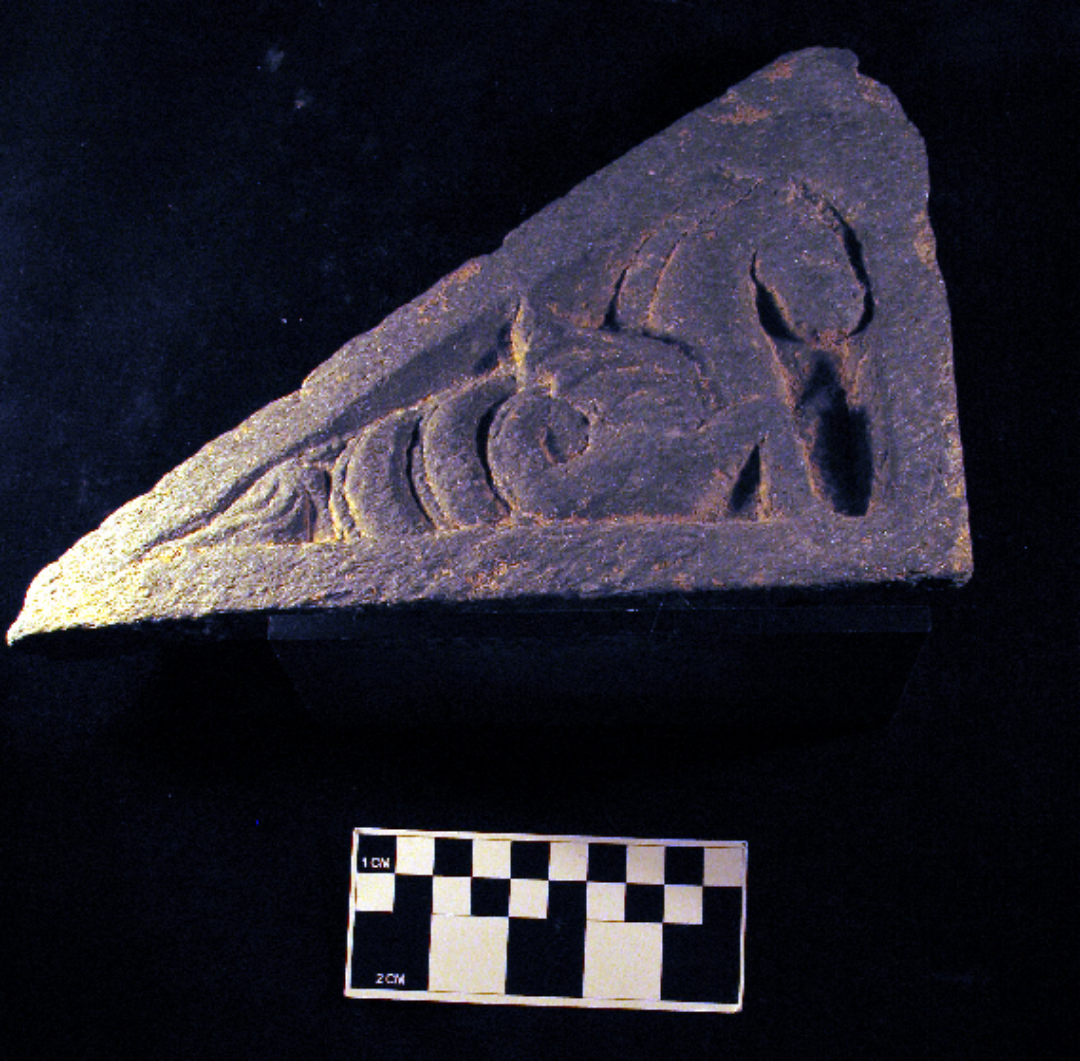
Cone
Ancient Mesopotamia, Lagash, c. 2130 BC
Dedication Cone
Clay
ID 6531
Donated in 1985 from the collection of Richard Ainley.
The cuneiform inscription reads:
“(To the god) Ningirsu, the mighty warrior, Lord of the exalted temple, Gudea, the prince of Shirpula, its foundation he built; the temple of E-Ninnu to Ningirsu he dedicated and built; its foundation he established.”
Used by Mesopotamian and Sumerians cultures beginning in the third millennium BC, dedication cones were cone-shaped nails were stuck into the mudbrick walls to serve as evidence that the building was the divine property of the god to whom it was dedicated.
Most times, the observes from the outside wouldn’t be able to read the inscriptions, since the cone was placed inside the walls. But it was not an issue since the cones were dedicated to the Gods.
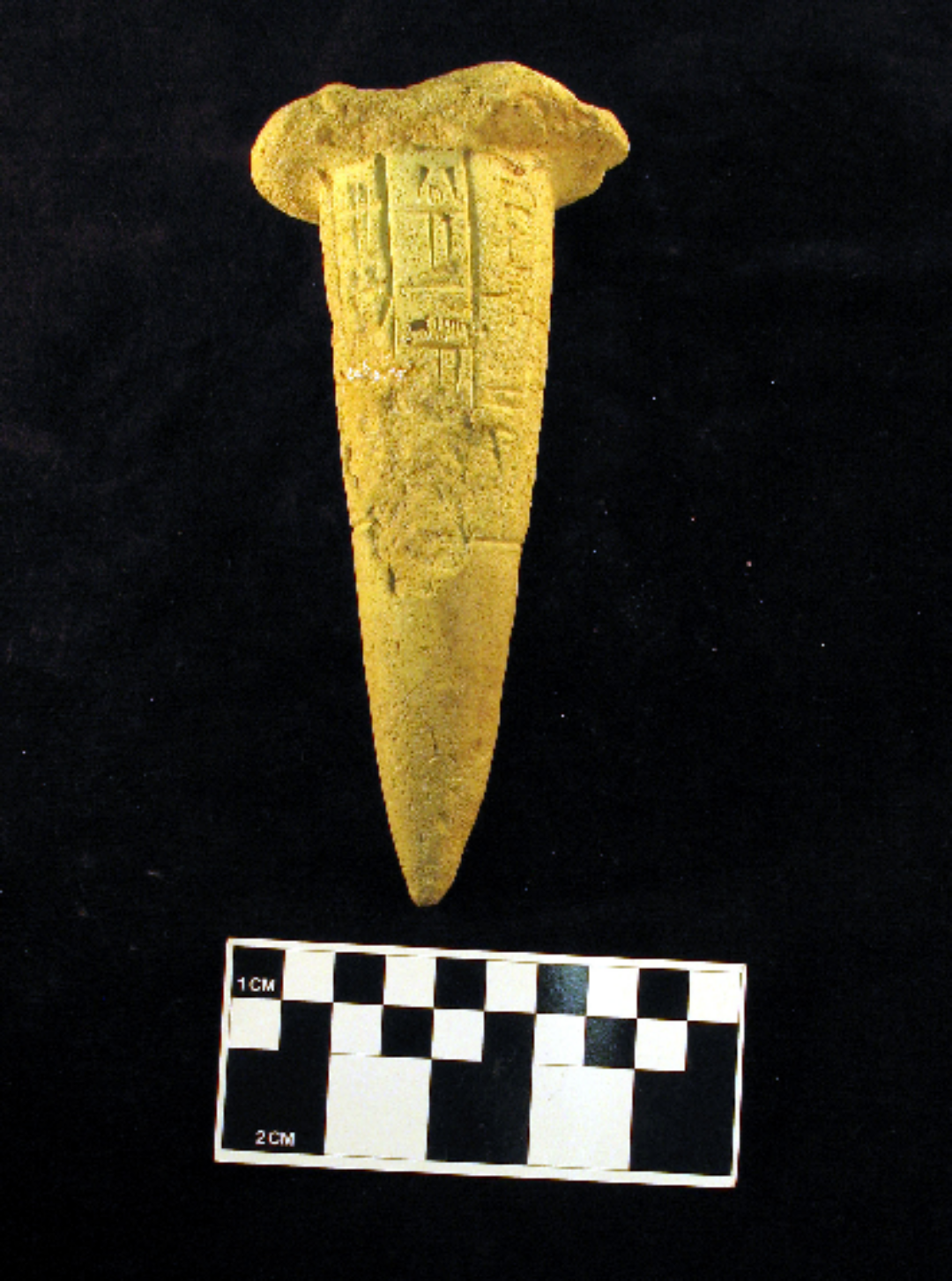
Furnishings
Amphora, Ungentaria, Cups, Jugs, Bottles, Vases, Pots, Lamps, Dishes, Bowls
Oil Lamp
Roman Byzantine
Ceramics
ID 7728
Donated by Gerald Larue in 1967.
This Oil Lamp was produced in the Byzantine Empire (313-1453 AD), also known as the Eastern Roman Empire. During that time, such lamps were used both indoors and outdoors. They served utilitarian, ritualistic, and symbolic purposes.
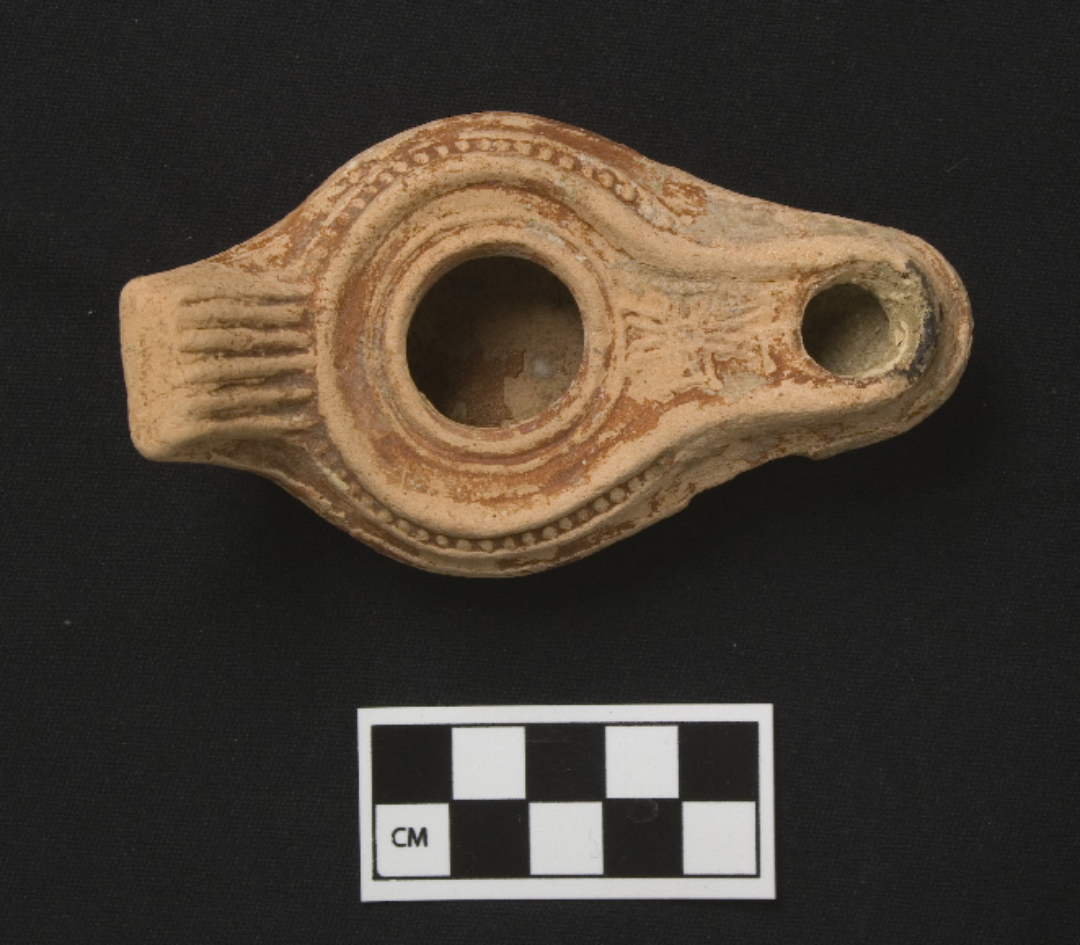
Amphora
Italy, Apuglia, 1850-1550 BC
Terracotta
Ht: 15.5″
ID 1024
Donated from the collection of Arthur Sherwood in 1997.
Amphoras were common objects in the daily life of people living in the Italian Peninsula in the Bronze Era.
This particular Amphora was made in 1850-1550 B.C. and its pattern is typical from Apulia, the most southern region of modern Italy.
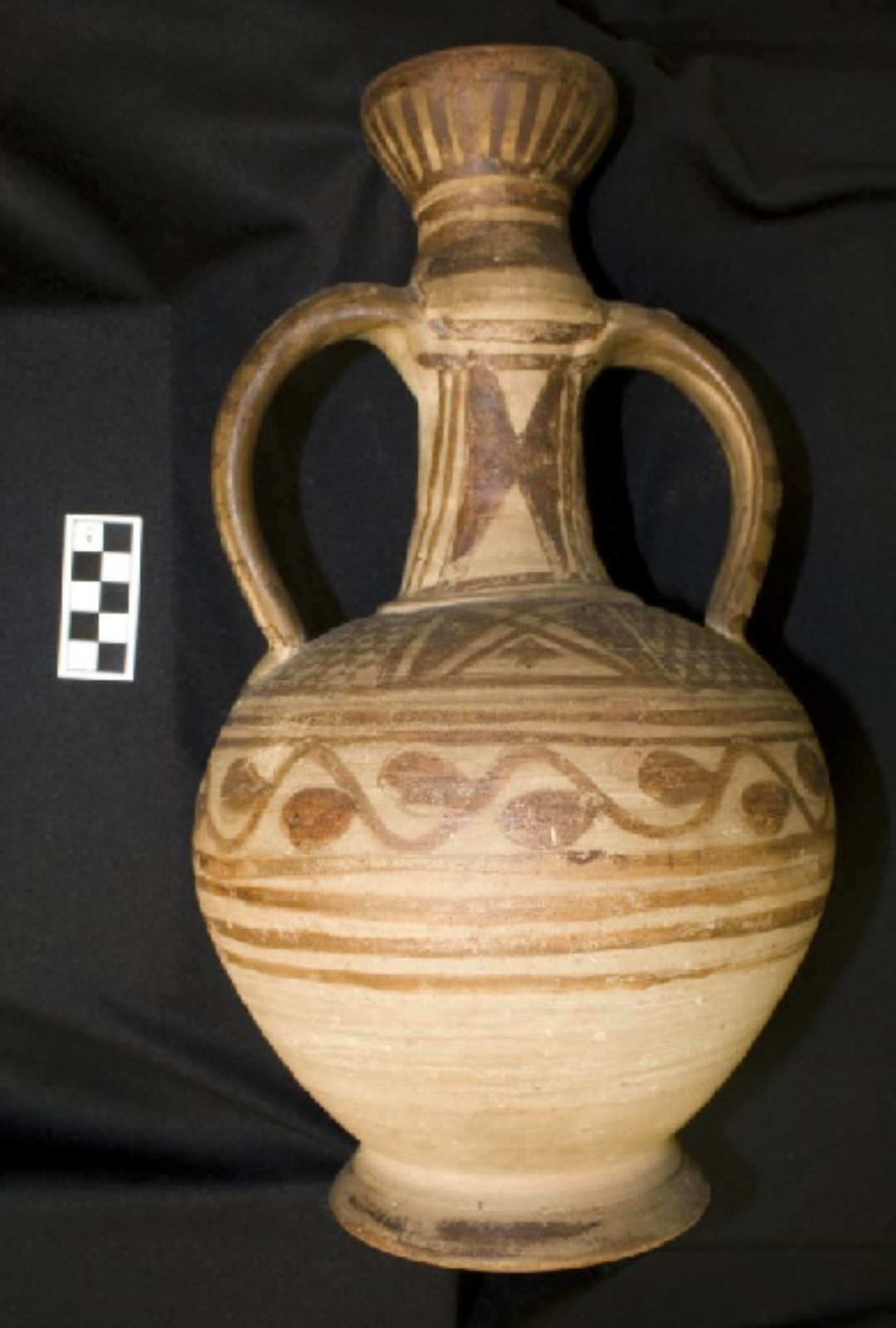
Pot
Greece, 1730-1400 BC
Clay
Ht: 4.75″
ID 1021
Donated from the collection of Arthur Sherwood in 1997.
This artifact is a Krater, an ancient Greek vessel used for diluting wine with water. Did you know that Ancient Greeks used to dilute four parts of water in one part of wine? Would you drink water down wine?
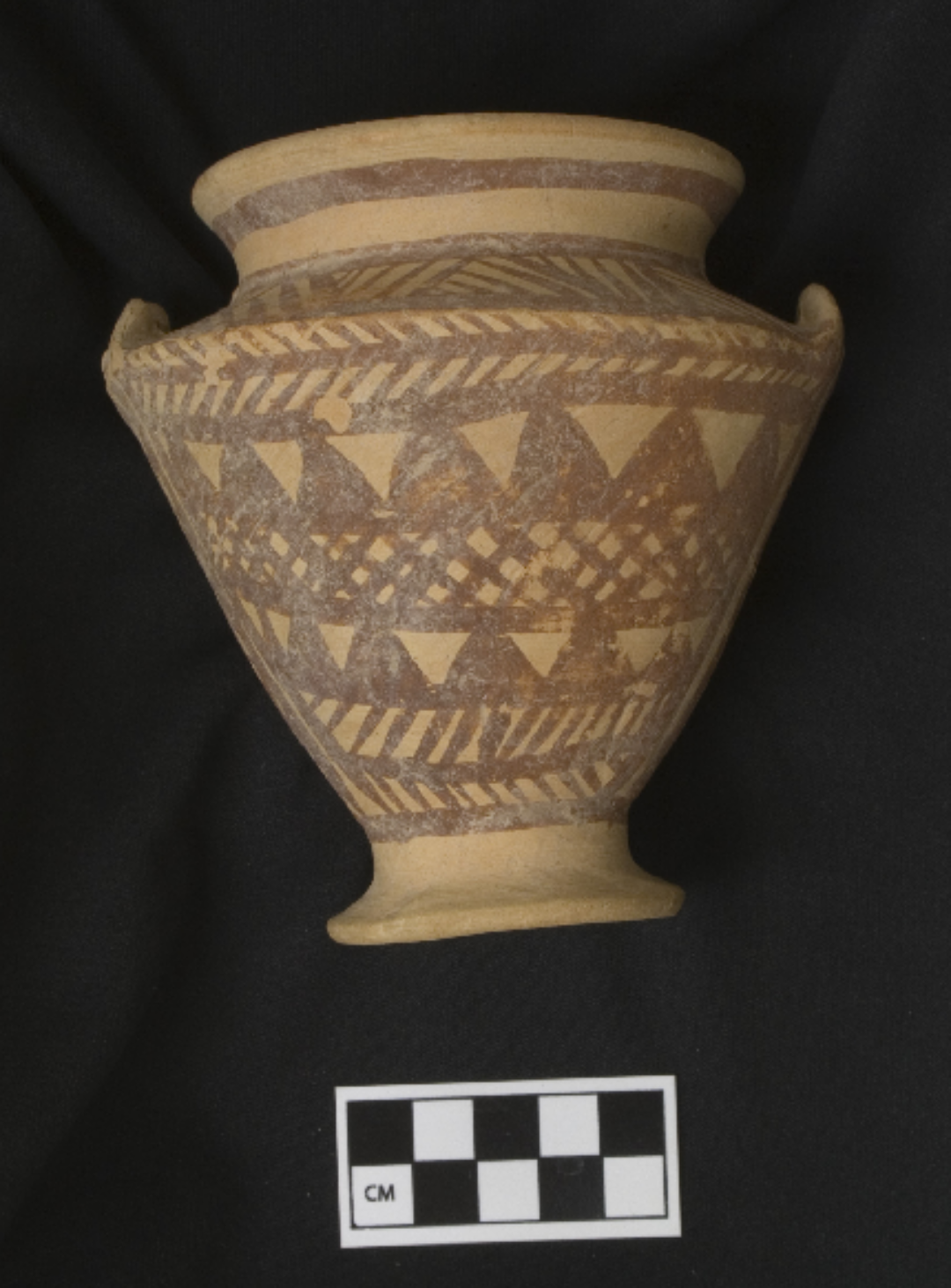
Jug
Italy, Apuglia, 4th Century BC
Terracotta
Ht: 10″ x 9″
ID 1019
Donated from the collection of Arthur Sherwood in 1997.
This terracotta Jug was produced in Southern Italy in c. 400 B.C. As you can see from the black and white photo reference ruler, this is a rather large Jug, in comparison to other artifacts displayed from our collection. It has a unique pattern of ornate black and brown linear polychrome on a creme slip base.
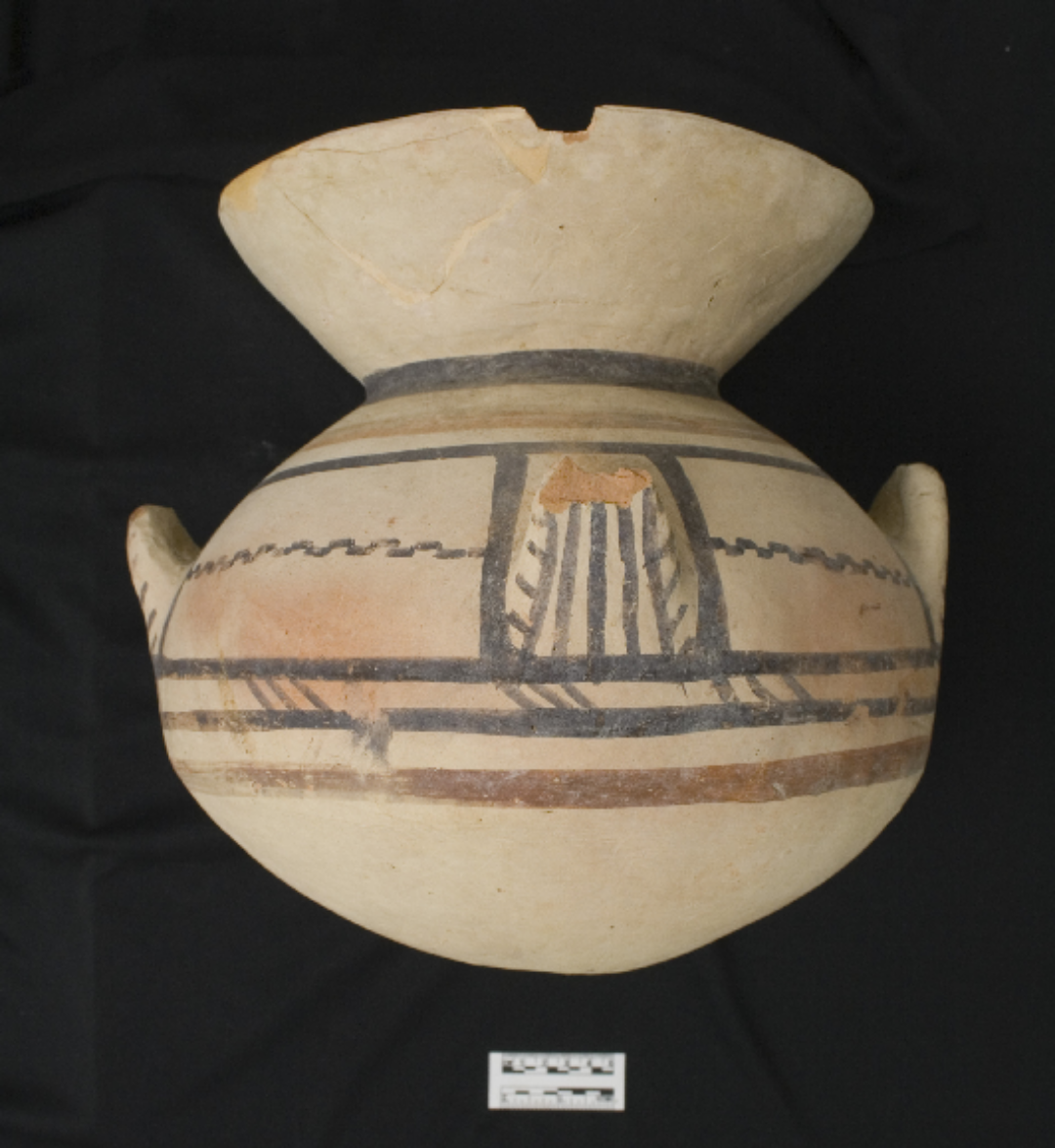
Jewelry and Adornments
Beads, Buttons, Rings, Bracelets, Necklaces, Amulets, Pendants, Seals
Necklace
Palestine, Hebron, Islamic Period (640-1265 CE)
Clay
ID 7379
Donated by Gerald Larue in 1967.
This beaded necklace is composed of 41 colorful beads made of clay. It was in found in the surface of an archeological site in 1964 in the city of Hebron, that at the time was part of Jordan. Between 1967-1997, Hebron belonged to Israeli Government, and now it is administered by the Palestine.
Would you wear a colorful necklace like that? Do you think some fashion trends might be timeless?
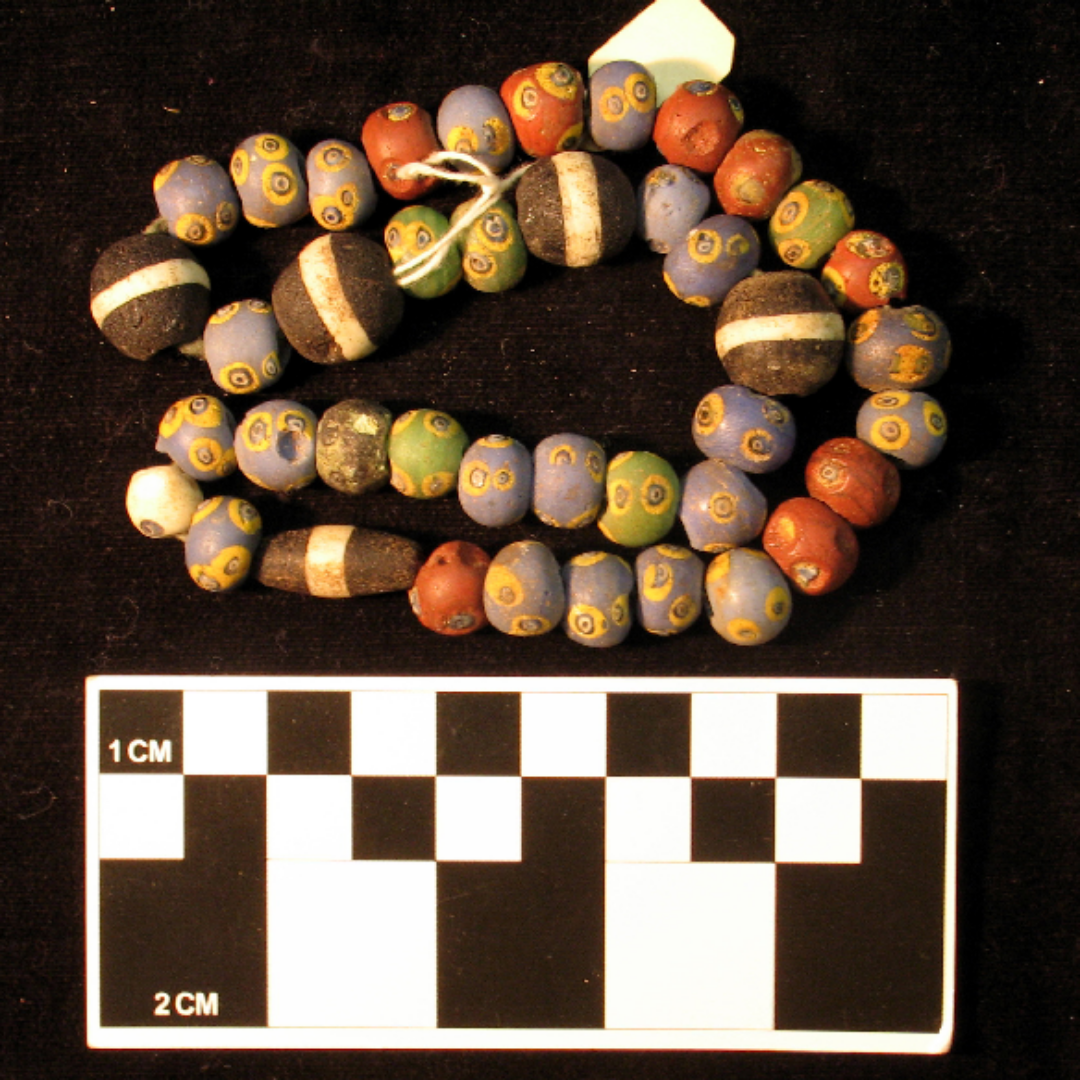
Ring
Israel, Khirbet Mazra’a
Metal, Iron
ID 5349
Donated by Gerald Larue in 1967.
This ring was at the Khirbet Mazra’a site in Israel during the 1968 excavation.
As you can see, this ring has seen better days! Its iron surface has been highly corroded with time. Can you imagine what it has gone through to be in this condition?
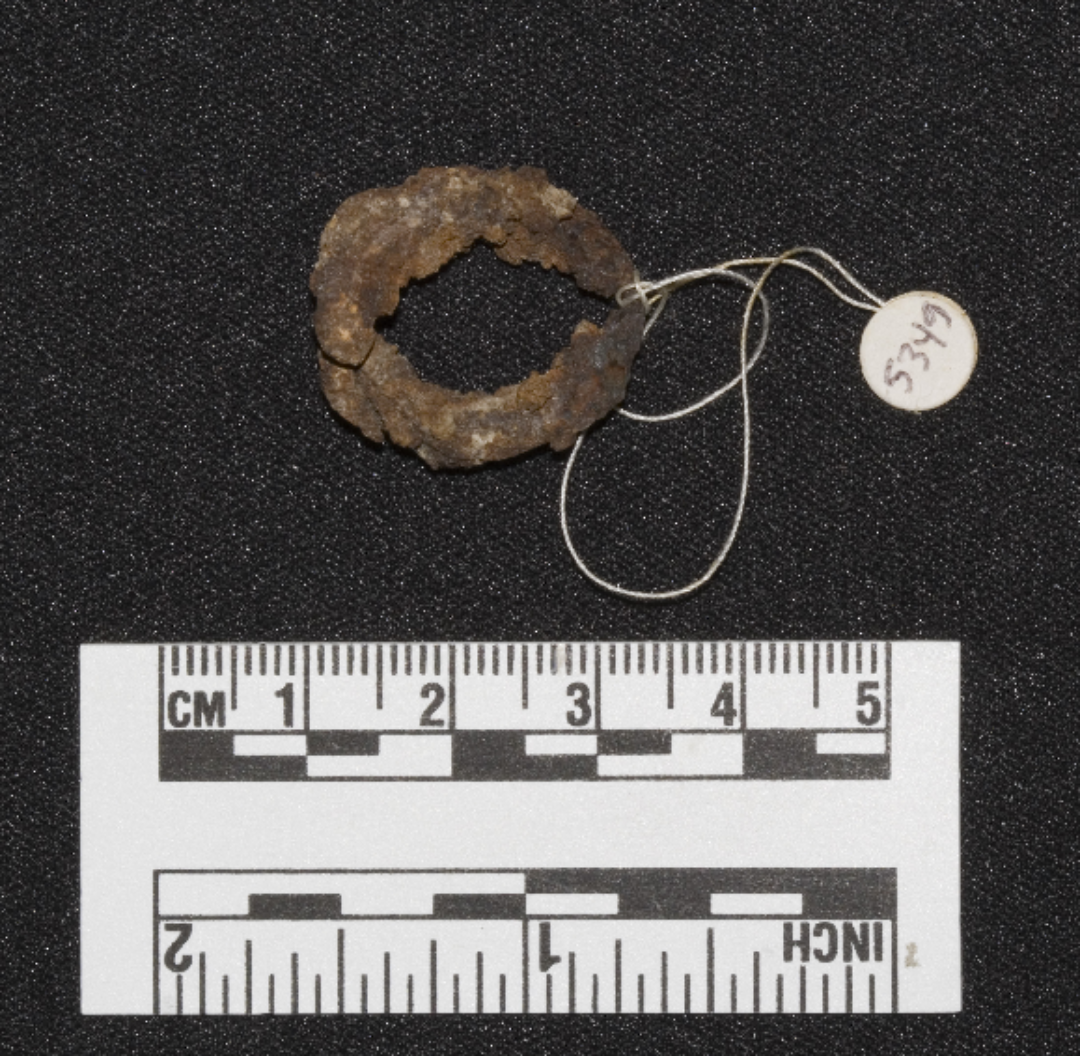
Button
United States, Los Angeles, 20th century
ID 13117
This button belonged to the uniform of a LARy (Los Angeles Railway) employee. It was purchased by Grant Dixon in April 2014 and was on display in the Ronald Tutor Campus Center at USC.
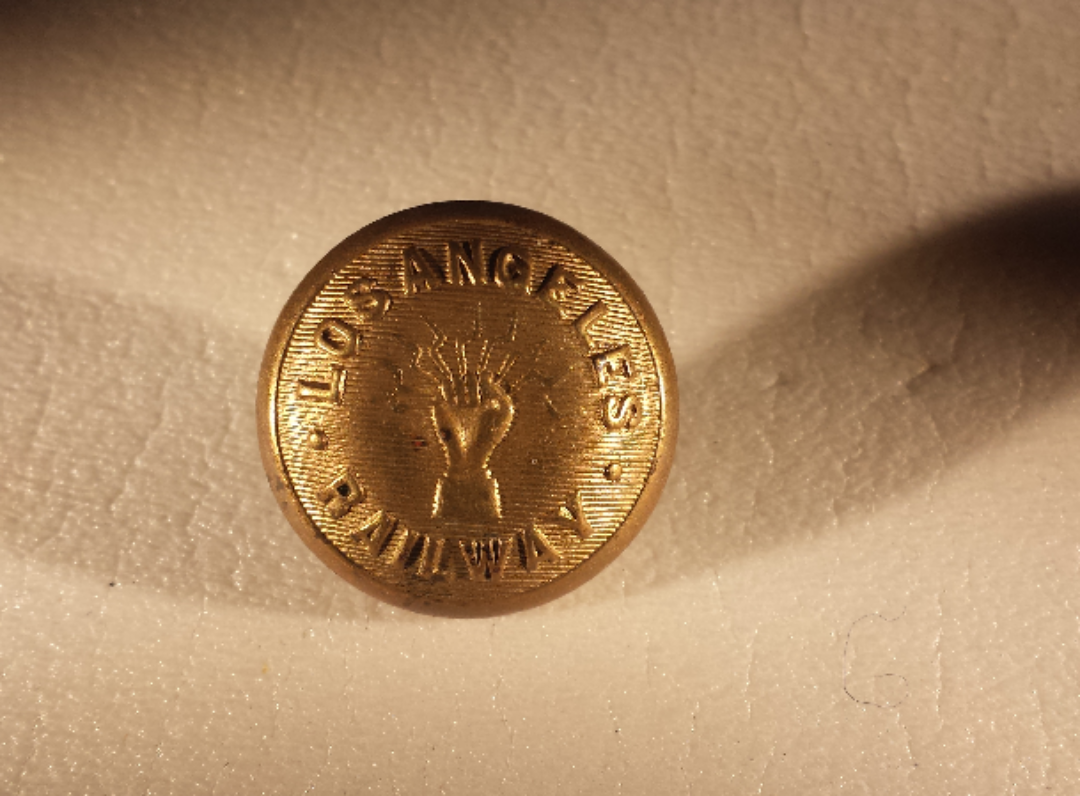
Sculptures
Busts, Figurines, Cerimonial Objects, Plaques, Stelae
Bust
Germany, Cologne, c. 2AD
White Clay
9.3 x 7.8 x 5.6 in
ID 8070
Donated from the collection of Ann Friede in 1985.
This bust is the head of a female, with wide-radiating hair style.
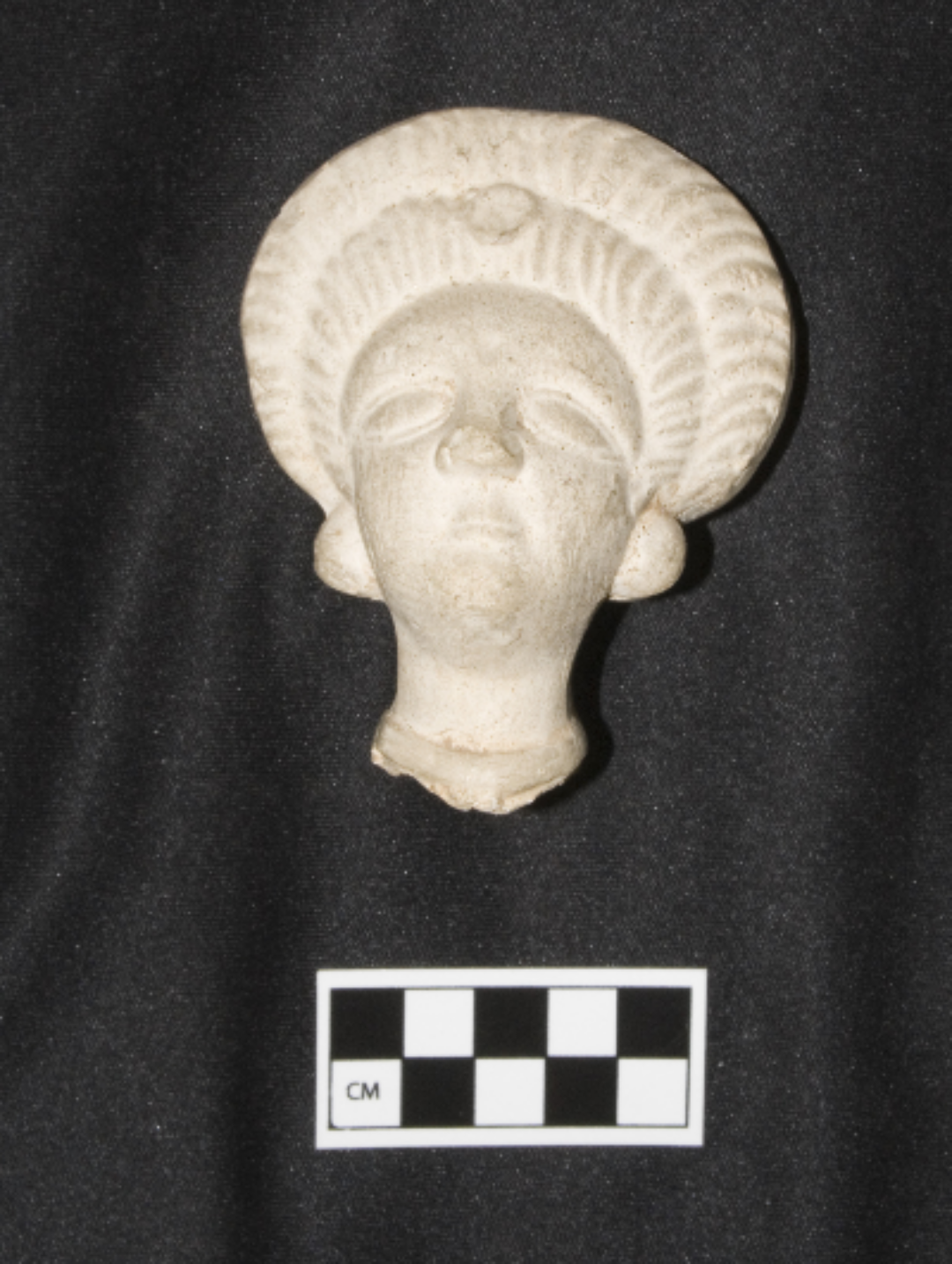
Figurine
Syria, 7-6 BC
Terracotta
Votive Plaque
ID 0812
Donated in 1986 from the collection of Richard Ainley.
This figurine is a Votive Plaque, or a sheet of gold stamped with an image or inscription. In this case, it is depicting Astarte, the goddess of fertility, sexuality and war.
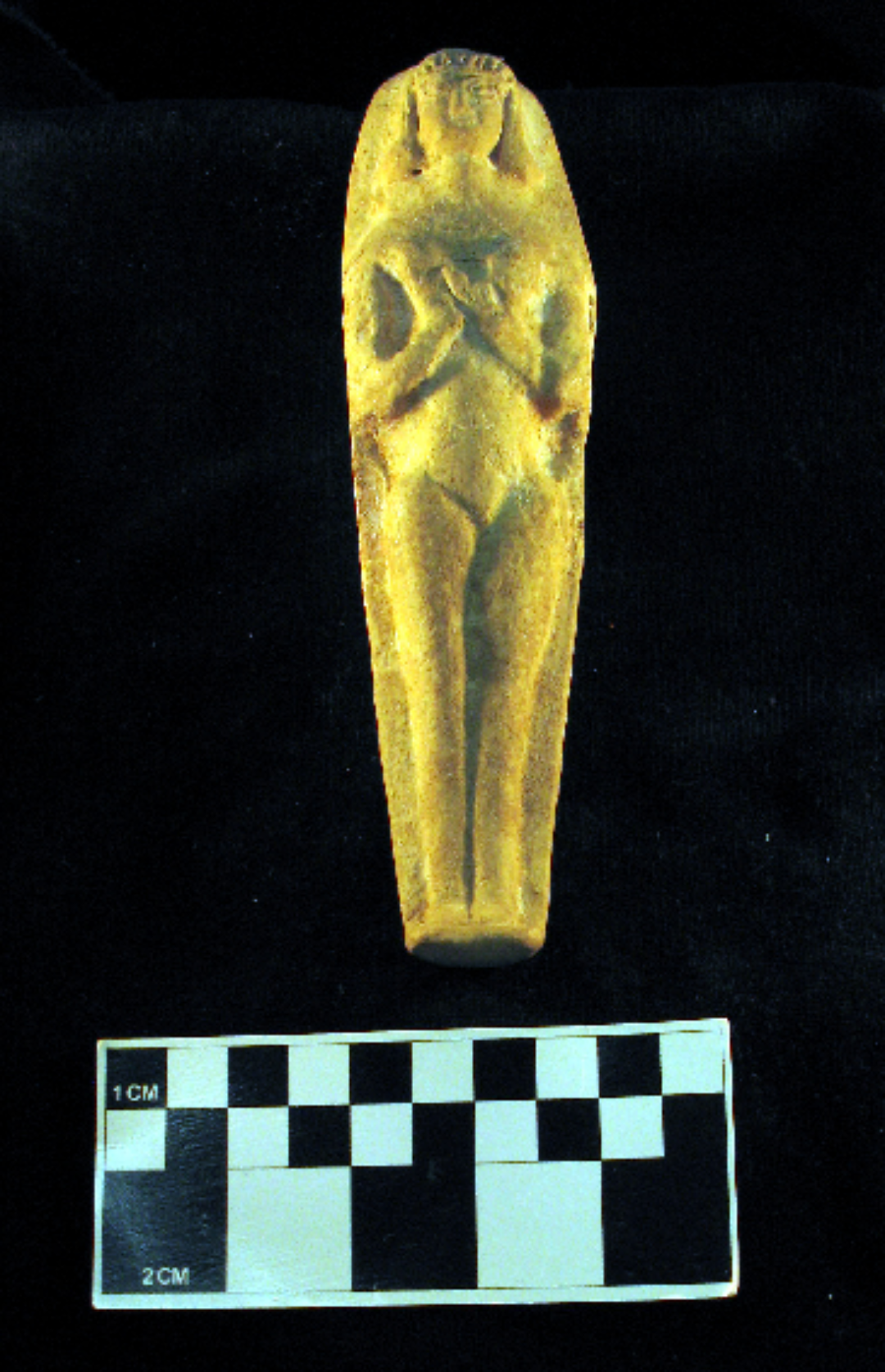
Plaque
Roman Empire, 3 AD
Bronze
3.5 x 3.5 in
ID 5270
Donated from the collection of Steven Rubinger, 1991.
This artifact is a Roman bronze applique of the head of a Medusa with wavy hair and large piercing eyes. The features are well defined, there are pegs along the periphery of a different metallic composition for attachment. It is dated to the 3rd Century A.D.
Does it resemble the modern medusas portrayed in the media such as in Percy Jackson? What do you think?
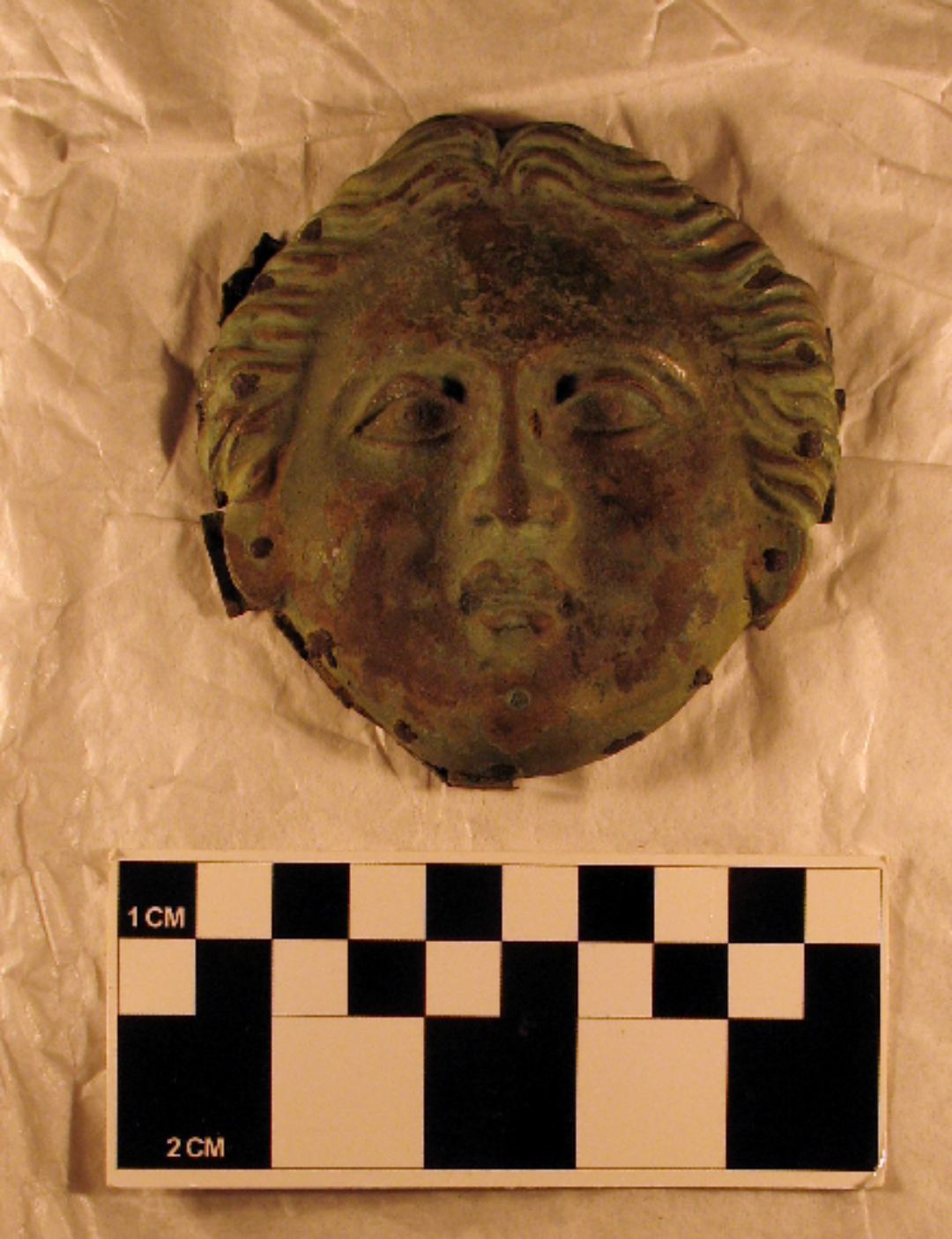
Tools and Equipment
Seals, Tablets, Coins, Bullae
Coin
Roman Empire
Metal
ID 10772
Donated from the collection of Harvey A. Herbert in 1994.
This coin depicts a portrait of Emperor Constantine. Ruling the Roman Empire from 306 – 337 AD, he was the first emperor to convert to Christianity.
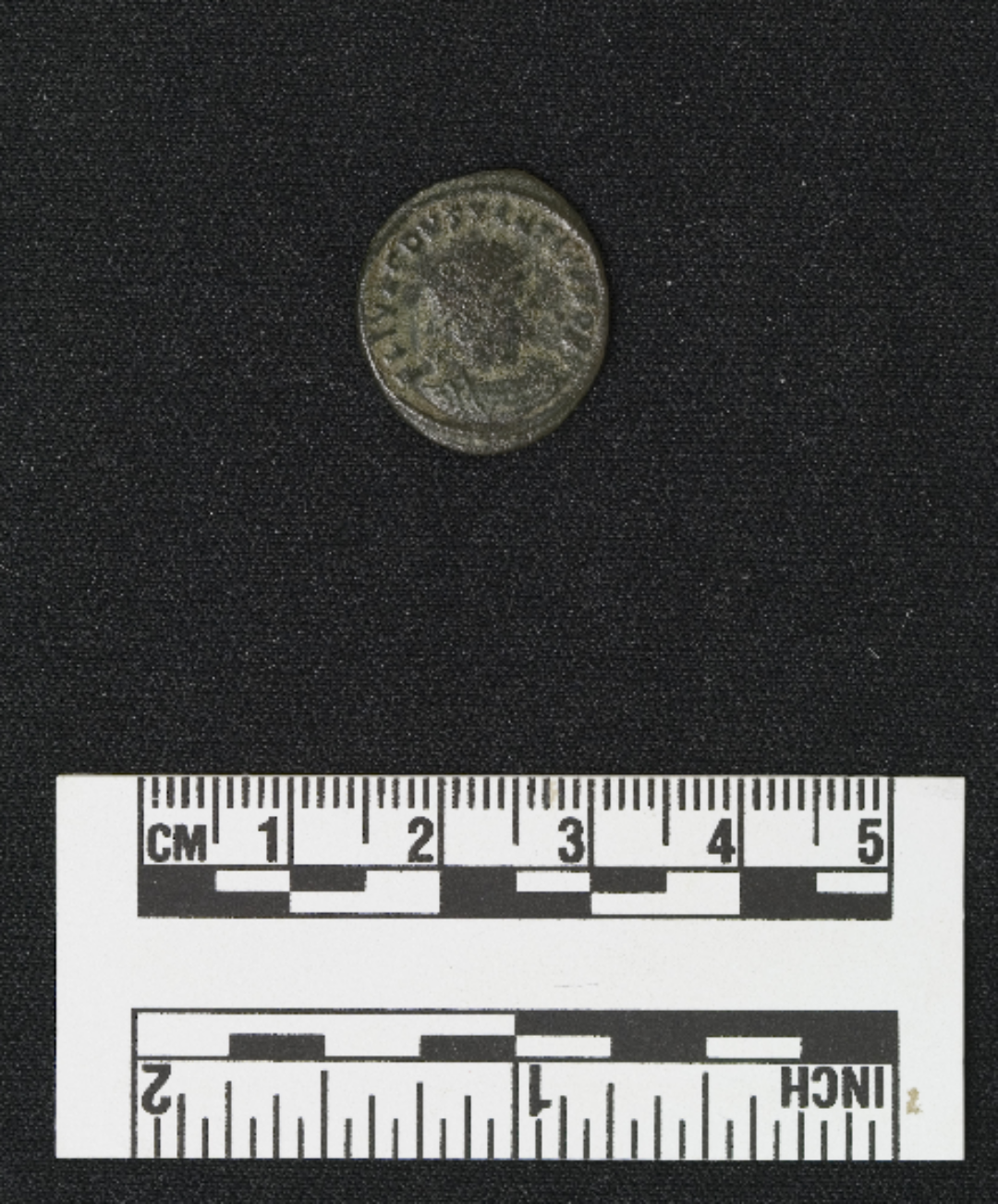
Correspondence
Sumer, Iraq
Cuneiform Tablet
Clay
ID 6620
Donated in 1985 from the collection of Richard Ainley.
The following translation was provided by the Bablyonian section of Yale University’s Sterling Memorial Library:
“141 quarts of ( ), 1 kor 100 1/2 quarts of ground ( ) from Ur-Abba. Sealed by Atu, the equerry, son of Ur-wanna. In arrears on account of Nanna. Flour entering the E’abba. The year that the en-priest of Nanna was selected.”
People in ancient times frequently used clay and other types of stone to write crucial information. In the 20th century, people used mainly paper, and nowadays, we are increasingly using digital platforms.
While clay stones and paper are great sources for archaeologists, online documents aren’t. What will the future of Archaeology look like if we leave much less material imprint available for study?
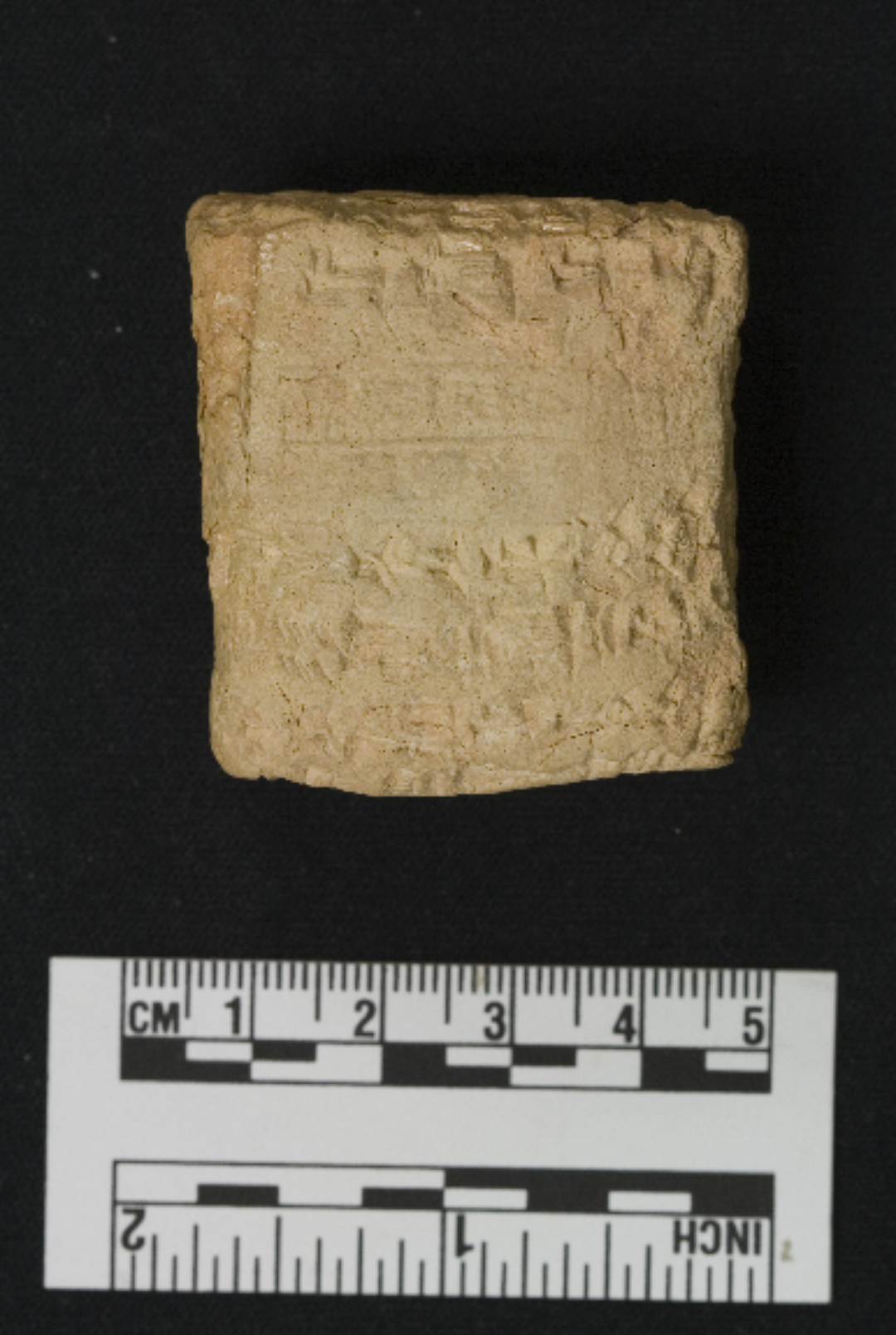
Amulet
Iron Age (1200 BC – 550 BC)
Stamp seal; scarab
ID 7355
Item acquired by Gerald Larue for USC in 1967.
This is the stamp impression of a scarab, an Egyptian symbol of regeneration. This practice was adopted by multiple Mediterranean cultures such as Phoenicians.
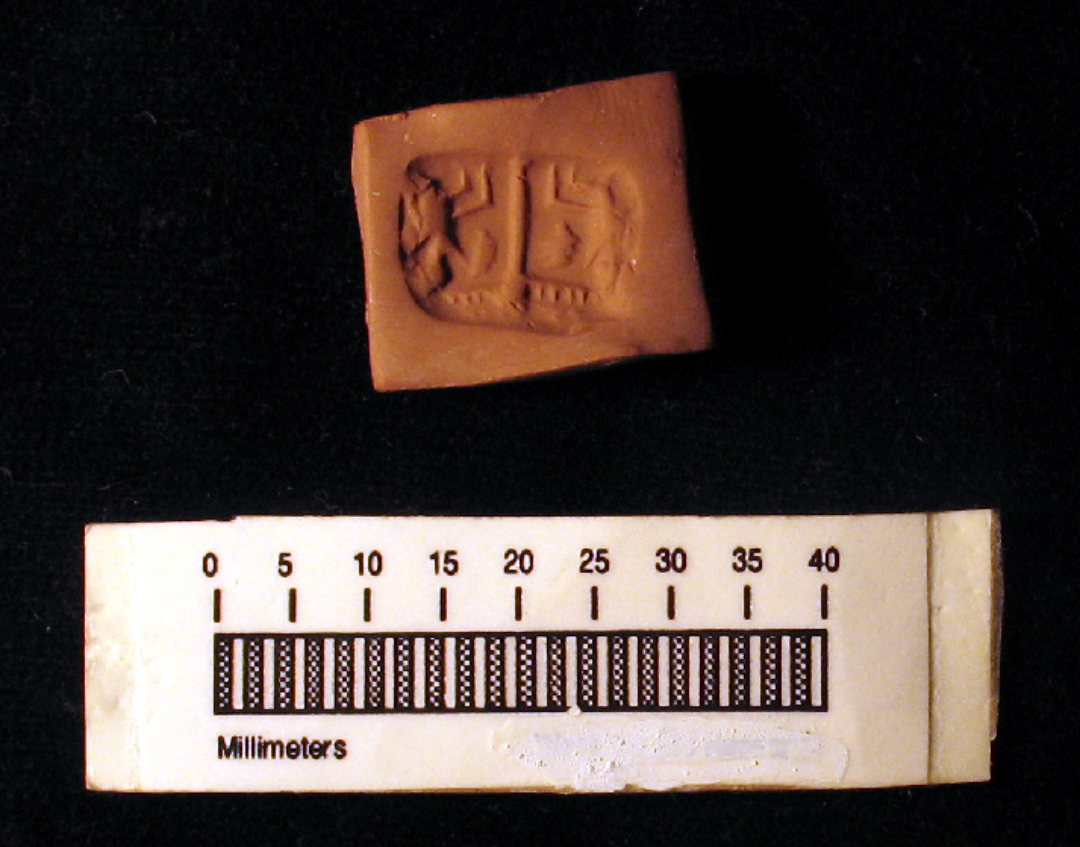
Get your hands on the past! The ARC Lab has real artifacts from various excavations. Our archaeology collection offers a mesmerizing glimpse into the diverse cultures and civilizations that have shaped our world. From jewelry and sculptures to everyday tools, every piece in our archaeology collection has a story. Come find out what they are!
Arms & Armor
Daggers, Arrows, Spears, Swords, Axe HeadsFurnishings
Amphora, Ungentaria, Cups, Jugs, Bottles, Vases, Pots, Lamps, Dishes, BowlsContact Us
Director of the Undergraduate Archaeology Program
Prof. Lynn Dodd
825 Bloom Walk, ACB 335
Los Angeles, CA 90089-1481
